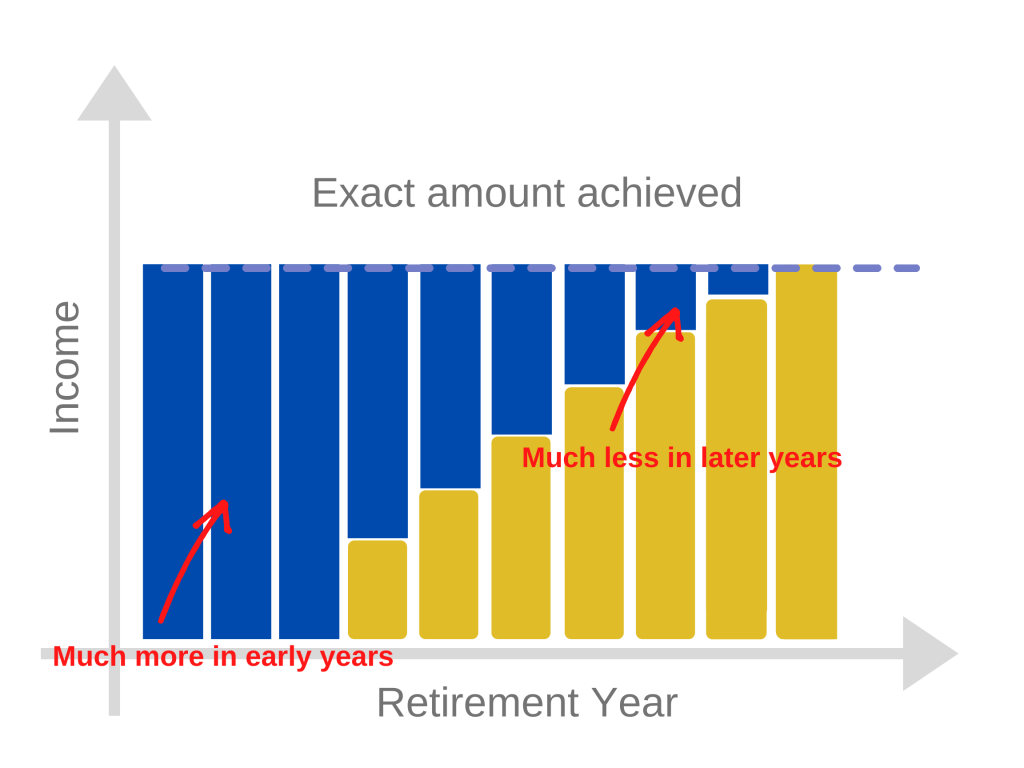

For example, let’s say your post-retirement plans include lower income needs. Whatever you do now influences your taxes later. So it doesn’t make sense that a magic number for one individual, couple or family is universal. "Tax diversification is beyond important because you want to be able to have some control over your taxes. The goal is to get to a place where "We're not just diversified across assets, we're diversified tax-wise too," says Russo. The need for retirement income is assumed to last through the users projected planning horizon which is assumed to be age 93 unless a different age is specified. For example, if you have a 401(k) through work (and will pay taxes in retirement) and want to supplement those savings, it might be smart to open a Roth IRA, which will charge you taxes upfront. The personal retirement number, or retirement goal, is based on purchasing a hypothetical annuity with a discount rate (return) of 4.87 which will last through retirement. Tax diversification comes into play if you have multiple accounts. So you have to pay taxes on the money no matter what, but you can decide if you want to pay those taxes now or in retirement. But with a Roth IRA, you pay taxes on money now so you can withdraw it tax-free later. The next step is to calculate the amount of money you need to support the retirement lifestyle you want. If you put all your money in a 401(k) or a traditional IRA, you'll pay taxes on the money when you withdraw it in retirement. Then, you need to think about taxes, both in the short and long term. Not putting all your eggs (or in this case, money) in one basket is key.
RETIREMENT MAGIC NUMBER SERIES
When you start putting money in a retirement account, you'll need to answer a series of questions that will determine where your money is invested (stocks, bonds, mutual funds) and how aggressively it is invested. A Roth IRA functions a bit more like a regular investment account and has fewer restrictions (and fewer upfront tax breaks). A traditional IRA functions like a pension with nice tax breaks and will restrict how and when you can access the money. And since your employer may match the money you contribute (to an extent), you can increase your savings quickly. A 401(k) is an employer-sponsored retirement account.

The most common retirement account types are a 401(k), a traditional IRA, and a Roth IRA. Russo explains, "It's always best to use accounts that allow for growth with compound interest - traditional savings accounts don't compound the same way." She goes on to say that it's "always best to use retirement vehicles if you’re saving for retirement so you get that compound growth and tax advantages."Ī retirement account invests your money into things like stocks, bonds, and mutual funds, which allows for more growth than a savings account. This number typically increases every year - allowing individuals to save a little more with beneficial tax treatment. For individuals over 55, you are able to contribute an additional 6,000. The maximum you can contribute to your 401ks this year is 18,000. According to Bankrate, the average interest rate for savings accounts in October 2021 is 0.06%, which is.not great. Retirement plans and how much you can contribute.


 0 kommentar(er)
0 kommentar(er)
